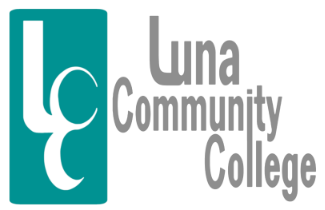Safety Committee
Safety Committee Current Members
Purpose Statement
The Safety Committee of Luna Community College is dedicated to fostering a safe, secure, accessible, and healthy environment that supports teaching, learning, and campus life. We work to protect the well-being of students, faculty, staff, and visitors by addressing physical safety, health protection, and emergency preparedness. Our responsibilities include ensuring that all individuals can navigate the campus safely and efficiently — including providing clear campus maps, wayfinding resources, and ADA- compliant accommodations — and preparing for potential emergencies such as natural disasters, health crises, and active threat situations. Through collaboration, prevention, and education, we strive to create a campus culture of awareness, preparedness, and mutual care that reflects the needs of our rural community and the diverse programs we offer.
| Mathew Griego | Chair | Facilities and Life Safety Director |
| MaRian K Brotherton | Co-chair | Nusing Faculty |
| April Sandoval | Secretary | Administrative Assistant |
| Michael Salazar | Member | Campus Security |
| Sharrise Sanchez | Member | Comptroller |
Priorities
Campus Safety, Accessibility, and Security
- Maintain and enhance safety protocols that protect people, property, and information, whileensuring ADA compliance and clear campus navigation.
Health and Emergency Preparedness
- Develop and implement strategies for preventing, mitigating, and responding to health crises, natural disasters, and active threat situations.
Safety Education and Training
- Provide accessible, discipline-specific safety training for all programs, with emphasis on Nursing, Allied Health, Technical Education, and Athletics. Include drills and guidance for active shooter response, evacuation, and crisis communication.
Regulatory and Policy Compliance
- Ensure all safety policies meet or exceed applicable federal, state, and local regulations, including accessibility and emergency planning standards.
Community and Agency Collaboration
- Partner with local law enforcement, healthcare providers, fire departments, and emergency management agencies to strengthen safety networks.
Objectives
Comprehensive Risk and Accessibility Assessment
- Conduct regular evaluations of facilities, equipment, and operations to identify hazards and accessibility gaps.
Incident and Emergency Response
- Maintain clear procedures for reporting and responding to incidents, including active shooter situations and campus evacuations, with routine drills for readiness.
Campus Navigation and ADA Accessibility
- Maintain updated maps, signage, and digital navigation tools; ensure all routes and facilities meet ADA standards.
Training and Preparedness Programs
- Offer ongoing safety workshops, including CPR/First Aid, lab safety, cybersecurity, and personal safety awareness.
Communication and Alert Systems
- Provide multi-channel alerts for emergencies, closures, and navigation changes to reach all campus constituents.
Continuous Review and Improvement
- Use data, feedback, and post-incident reviews to update safety plans, training content, and accessibility measures.
Meeting Times
Wednesdays at 2:30pm
